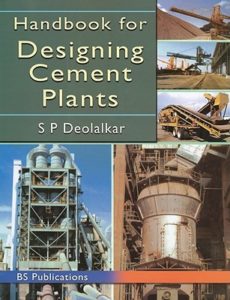Handbook for Designing Cement Plants
Handbook for Designing Cement Plants
Handbook for Designing Cement Plants is an outcome of this process of thought. I of course realize that it is well nigh impossible for anyone person to cover all the aspects of designing a Cement Plant in depth and to do justice to them all. In writing this book I have kept before me the various aspects that I needed most in my task of designing. In my working days I had taken steps to ‘standardise’ engineering needed so that my approach was consistent and the chances of overlooking anything were minimized. Ultimately we took the first steps to put on computer design and process calculations, calculations for sizing machinery and even for designing Cement Machinery.
You can also Read Cranes and Derricks 4th edition
Handbook for Designing Cement Plants content
- Overview of Manufacture of Cement
![]()
- Types of Cement – Their Properties and Uses
- Processes of Manufacturing of Cement
- Selection of Process and Machinery
- Raw Materials, Additives and Fuels
- Taking up the Design of a Cement Plant
- Technical Concepts – Process Flowcharts
- Technical Concepts – Conversion Factors
- The Technical Concepts – Design Margins to Arrive at Capacities
- Technical Concepts – Running Hours in Various Sections
- Technical Concepts – Sectional and Individual Capacities
- Process Gases
- Storages
- Machinery Schedules
- Drawing Specifications for Inviting Offers
- Properties of Materials that Affect Sizing and Selection of Machinery
“Cement” as Portland Cement was first made in a shaft kiln using dry process and later in rotary kilns. That “Slaked” lime hardens with water was well known and was used as “Mortar” with sand in construction industry before the advent of cement.Cement has hydraulic properties like slaked lime and hardens when mixed with water. Compressive strength increases in time and reaches its practical top limit after 28 days.Mixing crushed stone, sand, cement and water makes “Concrete”. When hardened it is like rock and
hence is called “Synthetic rock”. It has similar properties of high compressive but low tensile strengths.


Comments are closed.